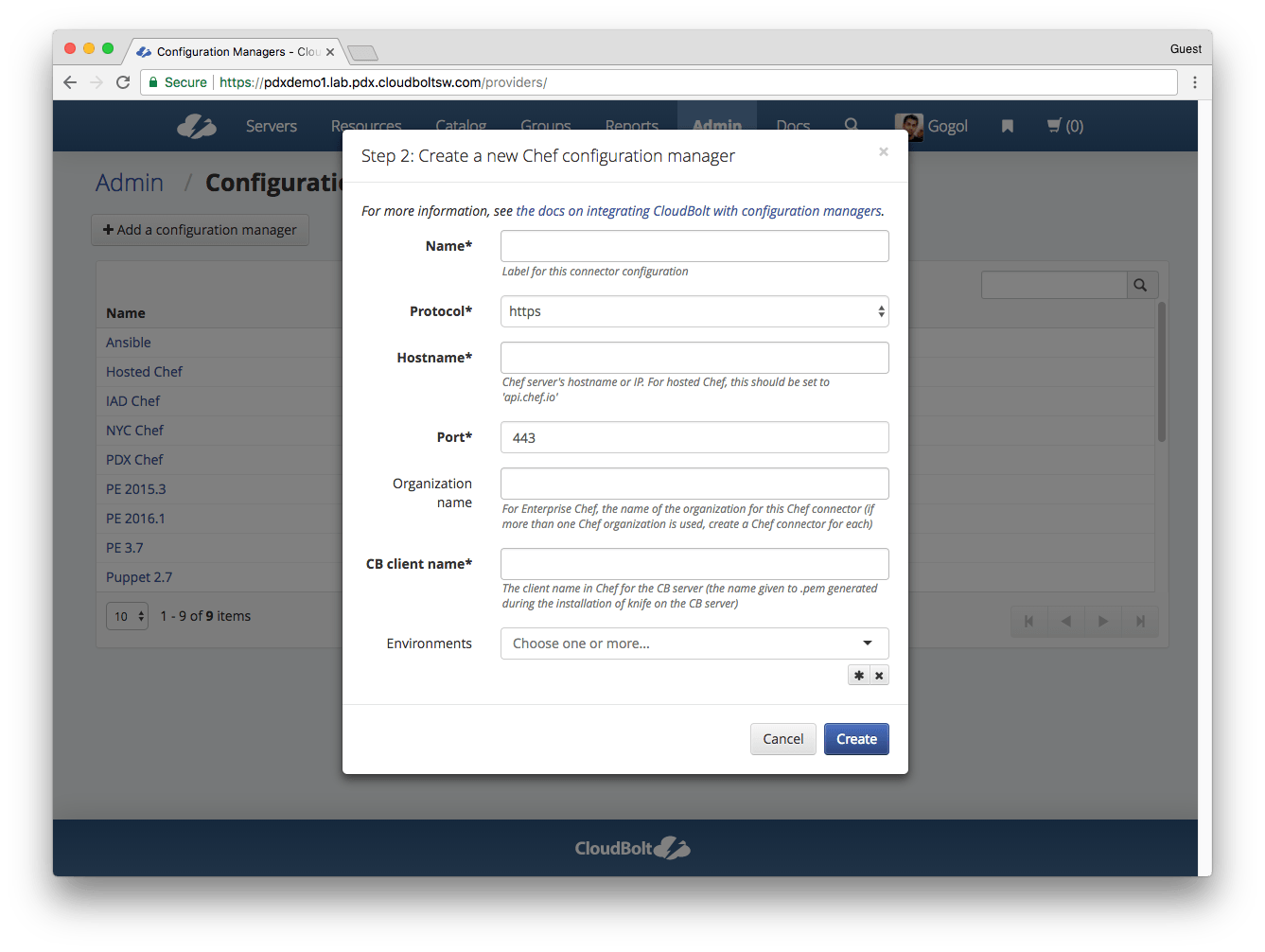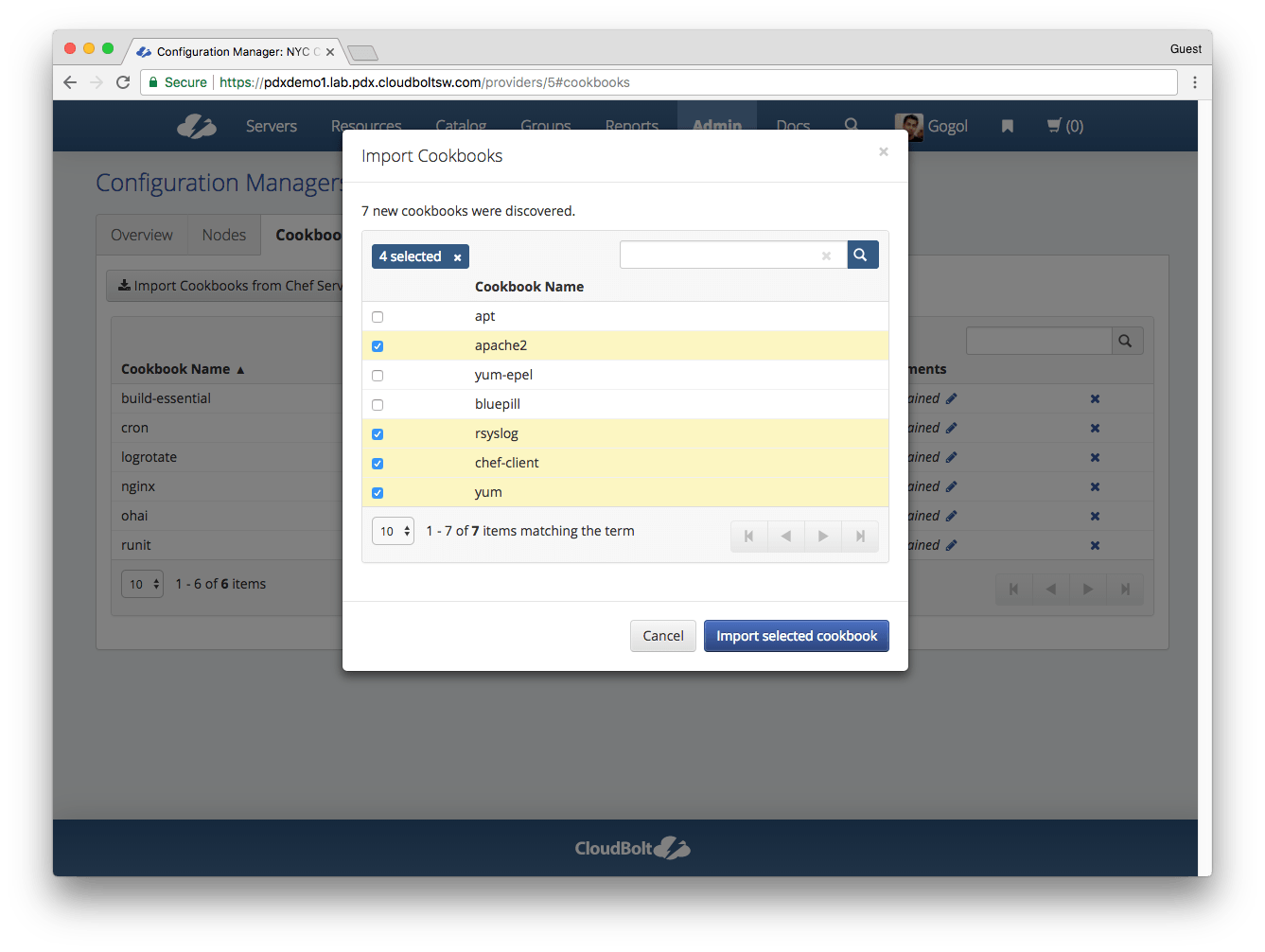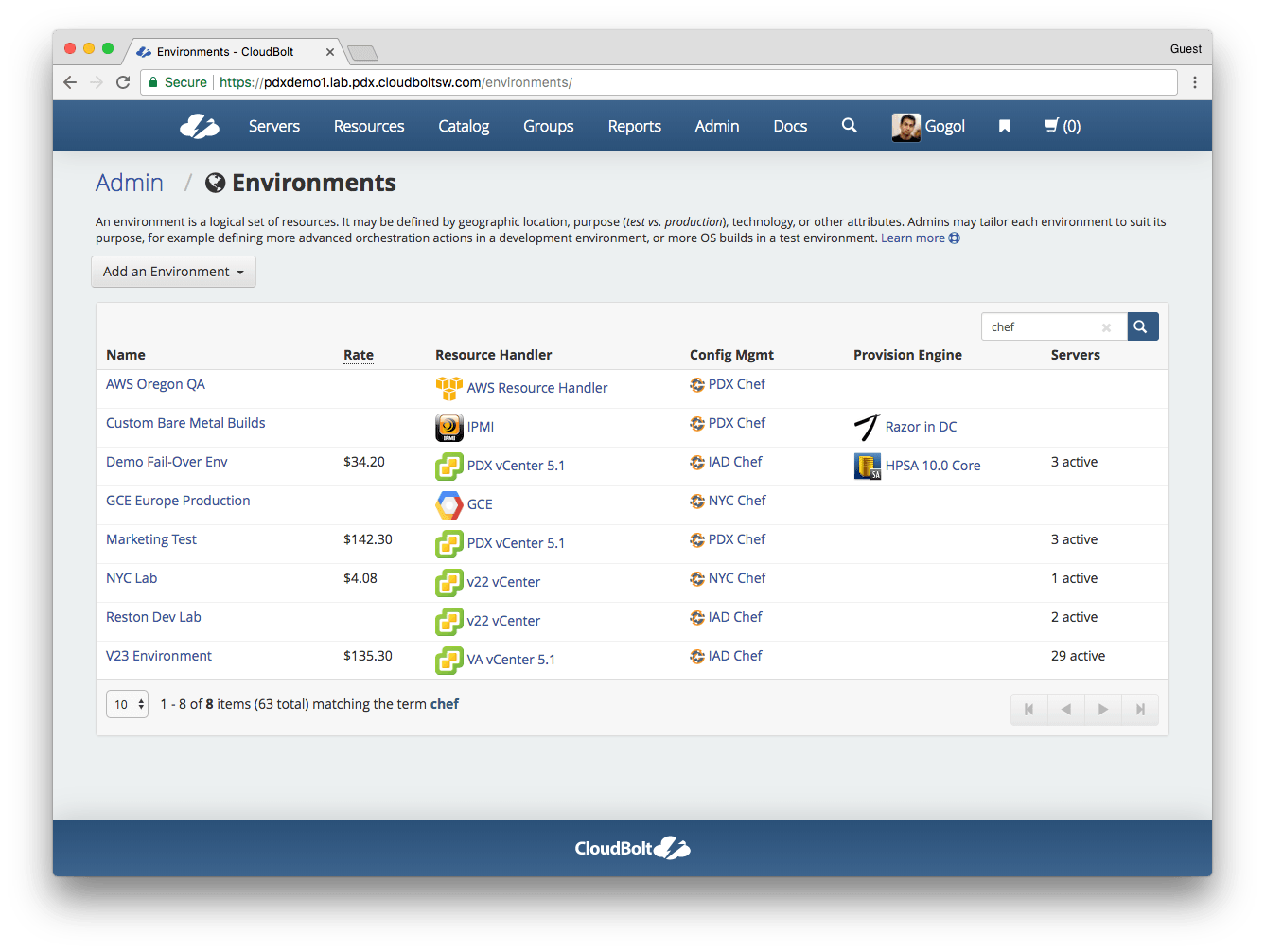What is CloudBolt?
Since you’re reading this blog, we’ll assume that you already know what Chef is, but you may not be as familiar with CloudBolt. CloudBolt is a hybrid cloud management platform that provides an intuitive interface for all IT requests. Users who need to request and manage resources can use the CloudBolt UI to get the resources they want, when they want them, and they are deployed in an automated fashion in accordance with the organization’s policies and best practices.
The integration between CloudBolt and Chef (which was released in 2013) makes sense because CloudBolt acts as the self-service catalog with business logic and policies, and Chef acts as the configuration manager automating operational logic and policies. CloudBolt is great at providing a simple UI to drive complex, orchestrated builds, and Chef is great at managing the configuration.
What does DevOps Bliss in a Hybrid Cloud Look Like?
A common yet lofty goal for enterprise IT organizations is to provide a self-service, hybrid cloud interface to end users that will enable them to create and manage VMs. At the same time, IT staff must ensure the that the same systems are built consistently, according to the organization’s standards and use DevOps best practices such as modeling infrastructure as code.
Chef and CloudBolt, when used in tandem, can achieve this state of DevOps bliss. Together, they empower users with self-service, freeing IT staff from the tedious process of manually building out systems, and instead enabling them to focus on more strategic, higher value work.
DevOps is a good thing when a few people in the organization can take advantage of it, but it can only reach its full potential when it is open to all users of IT resources.
Prerequisites
The following assumes you have both Chef and CloudBolt installed in your environment, and that you have administrative access to both of them.
- If you do not have CloudBolt, you can download the product for free from https://www.cloudbolt.io/platform/download/. You’ll receive your 25 server lab license via email within minutes of completing your request.
- If you do not have Chef, start here.
Integrating Chef and CloudBolt
CloudBolt comes out-of-the-box with built in integration with Chef. From the CloudBolt user interface:
- Browse to Admin > Configuration Managers, click the “Add a configuration manager” button and choose Chef.
- Complete the form, providing information on your Chef server.
- A few additional steps are needed, including installing the proper version of the Chef development kit on the CloudBolt server. The CloudBolt UI contains a link to complete instructions, or you can follow this one: http://docs.cloudbolt.io/configuration-managers/chef/index.html.
 Once basic communication is established from CloudBolt to Chef, you can import Chef roles and cookbooks into CloudBolt from the corresponding tabs on the page for that Chef configuration manager. After that is done you can choose which environments in CloudBolt should be Chef enabled. New VMs built in these environments will automatically have a Chef agent bootstrapped onto the servers, including any recipes or roles that you specify should be applied to all new VMs.
Once basic communication is established from CloudBolt to Chef, you can import Chef roles and cookbooks into CloudBolt from the corresponding tabs on the page for that Chef configuration manager. After that is done you can choose which environments in CloudBolt should be Chef enabled. New VMs built in these environments will automatically have a Chef agent bootstrapped onto the servers, including any recipes or roles that you specify should be applied to all new VMs.
 This setup is consistent whether you are building in your private data center with a virtualization technology like VMware or Nutanix AHV, or in one of the eight public clouds that CloudBolt supports.
This setup is consistent whether you are building in your private data center with a virtualization technology like VMware or Nutanix AHV, or in one of the eight public clouds that CloudBolt supports.
Now you can test new server builds and use the job details page to see where the Chef agent is installed and configured, and the output of the installation of the specified roles and recipes.
 Benefits
Benefits
Ease of use is a key benefit of CloudBolt. As a result, a broad range of users can perform on demand server and application stack builds. In addition, this larger group of people will now be able to take advantage of the power of Chef. The utility of your Chef investment is effectively multiplied by the number of users that use CloudBolt to build and manage environments.
- IT shops that use both CloudBolt and Chef build environments with confidence, and know that the resulting systems will be configured consistently across dev, QA, and prod environments, across on-prem and cloud deployments.
- One joint user of Chef and CloudBolt created a blueprint for deploying Hadoop clusters. With just a few clicks they are now able to deploy scalable 50-node Hadoop clusters in the public cloud, using CloudBolt as the user interface and orchestrator, and Chef to do the heavy lifting of the configuration of each of the nodes and installation of the appropriate Hadoop software.
- Since CloudBolt supports multiple Chef servers, Chef shops can more easily use several Chef servers, possibly of different versions, all from one user interface.
In short: DevOps bliss is achieved in a hybrid cloud with Chef and CloudBolt.
Conclusion
Watch for future CloudBolt contributed blog posts (we have one on the way about the aforementioned Hadoop blueprint), or let us know what related topics you would like to see posts on.
Visit cloudbolt.io or schedule a demo to learn more.

